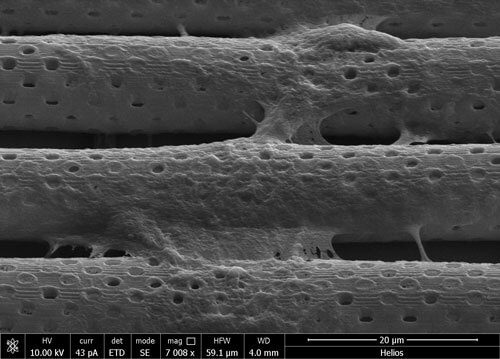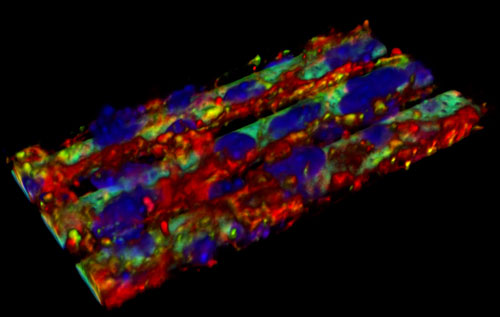Italian researchers have developed 3D bio-hybrid microfluidic models to screen for drugs and assess toxicity of nanoparticles crossing the blood-brain barrier.
The primary function of the blood-brain barrier is to protect the brain from neurotoxic compounds, pathogensand , blood-circulating compounds. In order to develop new treatments for neurodegenerative disease and brain disorders, researchers are observing how this barrier can be crossed.
A team of Italian researchers have created a life-like 3D bio-hybrid microfluidic model of the blood brain barrier using high-resolution 3D printing technology.
Although static 2D models as well as 2D microfluidic systems already exist, they are also quite limited. For the first time, 3D printing has enabled reproduction of microcapillaries of the neurovascular system on a 1:1 scale.
This accomplishment will enable the research team to screen the capabilities that drugs and other nanovectors have in crossing the blood-brain barrier. One of the main advantages of this system is that it renders animal models unnecessary, reducing ethical concerns and preventing harm to living species.
Defined as a bio-hybrid, the brain microcapillaries of the model include both artificial and biological components. While the artificial structure includes 3D porous tubes and is made using two-photo lithography, the biological portion includes porous microtubes that allow for the growth of endothelial cells.
The design is based on a mathematical model that should also guide further development of additional prototypes. The flow rate of the solution inside the microvessel is adjusted to a realistic and comparable value.
3D Printed Models of the Blood-Brain Barrier Could Offer Inside Look at Neurodegenerative Disease and Brain Disorders
Gianni Ciofani, who leads the Smart Bio-Interfaces group at the Italian Institute of Technology and is an Associate Professor at Polytechnic University of Torino, explains:
“The novelty of our work mainly consists in the fabrication of a reliable platform to carry out high-throughput quantitative investigations of drug delivery to the brain. The in vitro model provides a closed system where the different variables such as drug concentration, blood flow speed, pH, and temperature can be easily tuned and monitored, thus providing precious and detailed information about the BBB crossing in real time and at cellular/sub-cellular level.”
Though certain drugs show potential in the treatment of brain disorders, many are unable to cross the blood-brain barrier. Therefore, researchers have resorted to analyzing why these molecules are unable to cross the barrier and study the underlying cellular mechanisms.
This work potentially represents an important advancement for both pharmaceutical companies and scientific researchers exploring brain therapeutics for conditions such as brain cancer, Alzheimer’s, and Parkinson’s disease.
In the future, the team hopes to test the model using a variety of drugs, molecules, and nanoparticles. However, widespread safety concerns exist over the accumulation of nanoparticles in organs, and thus their potential toxicity will continue to require rigorous testing.
The study, entitled “A 3D Real-Scale, Biomimetic, and Biohybrid Model of the Blood-Brain Barrier Fabricated through Two-Photon Lithography”, was recently published in the journal Small.
Source: nanowerk
Website: LINK


Schreibe einen Kommentar
Du musst angemeldet sein, um einen Kommentar abzugeben.